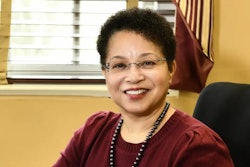When angry protests erupted earlier this year on college campuses across the nation, many student activists issued a list of demands to their university administrators in an effort to call attention to the lack of diversity and inclusion at their institution.
In a number of cases, college presidents—feeling pressure and wanting desperately to avoid the negative publicity that often accompanies student protests—relented to the students’ demands, offering all sorts of concessions in exchange for calm.
In some cases, the promises included commitments to double their efforts to retain minority students and to triple the number of minorities—particularly Black faculty—hired in full-time, tenure-track teaching positions.
Whether these institutions will ultimately make good on their many promises is yet to be seen. But what we do know is that, when administrators at predominantly White colleges and universities have historically been criticized for the miniscule number of Blacks on their faculties, their response has been that there are not enough qualified Ph.D.s.
That kind of rhetoric has long angered diversity proponents who feel that many colleges and universities simply haven’t been aggressive enough in their efforts to diversify their applicant pool and respond to the growing concerns about climate issues on campus.
Creating pipelines
Dr. Marybeth Gasman, a professor of higher education and director of the Center for Minority Serving Institutions at the University of Pennsylvania, recently penned a provocative essay in the Hechinger Report in which she offered a bold explanation for why colleges haven’t fared well when recruiting and hiring more faculty of color.















